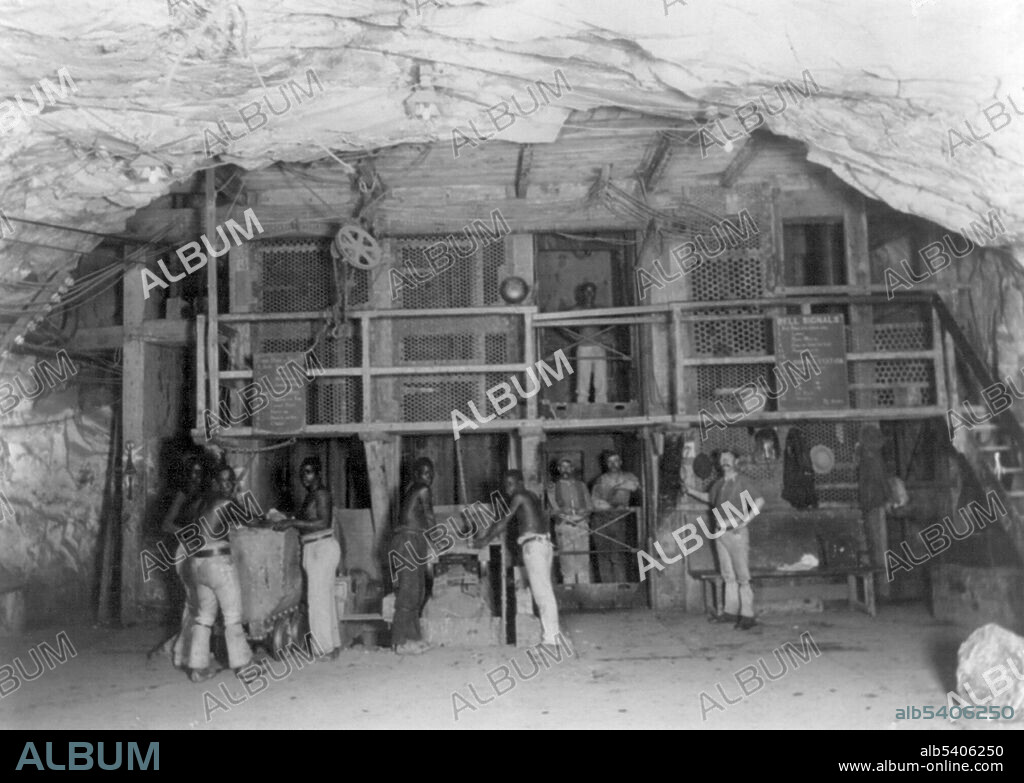alb5406250
South Africa, Kimberley Diamond Mine

|
Ajouter à une autre Lightbox |
|
Ajouter à une autre Lightbox |



Avez-vous déjà un compte? S'identifier
Vous n'avez pas de compte ? S'inscrire
Acheter cette image

Titre:
South Africa, Kimberley Diamond Mine
Légende:
Voir la traduction automatique
Entitled: "Men working 2000 feet underground in Kimberley Diamond Mine, South Africa." The 1867 discovery of diamonds in the Cape Colony, South Africa, radically modified not only the world’s supply of diamonds but also the conception of them. The first diamond discoveries in South Africa were alluvial. By 1869, diamonds were found far from any stream or river. First in yellow earth and below in hard rock called blue ground, later called kimberlite, after the mining town of Kimberley. In the 1870's and 1880's Kimberley, encompassing the mines that produced 95% of the world’s diamonds, was home to great wealth and fierce rivalries. In 1872, one year after digging started, the population of the camp of diggers grew to around 50,000. As digging progressed, many men met their deaths in mining accidents. The unsanitary conditions, scarcity of water and fresh vegetables as well as the intense heat in the summer, also took their toll. In 1888 the leaders of the various mines decided to amalgamate the separate diggings into one big mine and one big company known as De Beers Consolidated Mines Limited. Frank and Frances Carpenter Collection, circa 1890-1905.
Crédit:
Album / Science Source
Autorisations:
Modèle: Non - Propriété: Non
Questions sur les droits?
Questions sur les droits?
Taille de l'image:
4350 x 3102 px | 38.6 MB
Taille d'impression:
36.8 x 26.3 cm | 14.5 x 10.3 in (300 dpi)
Mots clés:
 Pinterest
Pinterest Twitter
Twitter Facebook
Facebook Copier le lien
Copier le lien Email
Email
